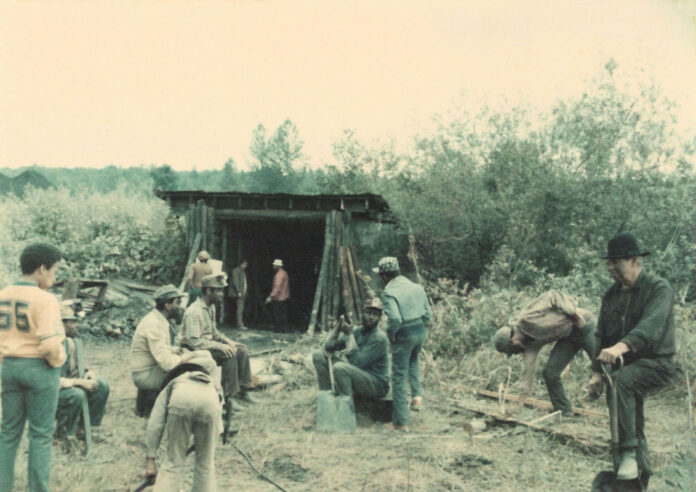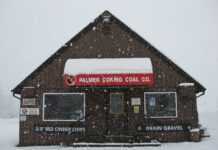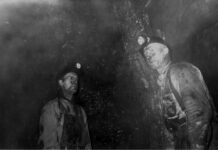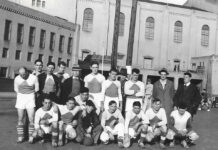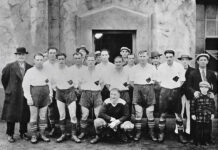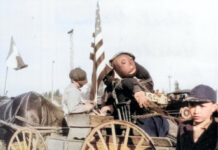Fifty years ago this week, a film crew landed in Black Diamond to shoot scenes for a television series designed to tell the story of Black miners recruited to travel halfway across the country to break coal strikes in Washington. Many of those who came to Roslyn and Franklin planted roots and stayed.
Most of the early college courses on Blacks ignored the plight of African Americans in the Pacific Northwest, focusing instead on those from southern states and urban centers. In the early 1970s, Quintard Taylor, a professor of Black Studies at Washington State, arrived in Seattle to gather oral histories of African Americans and heard how some came to Washington to mine coal. Taylor soon realized, “This is a story that needs to be told.”
In 1974, Taylor helped win a quarter-million-dollar grant from the U.S. Department of Health, Education, and Welfare to produce a five-part docudrama about the Black experience in Washington. It was called “South by Northwest” and came out two years before the sensation stirred by the 1977 Alex Haley miniseries “Roots.” In fact, Joseph M. Wilcots, who directed “South by Northwest,” also served as a director of photography during the filming of “Roots.”
Wilcots, who died in late December 2009, was the first African American to join the International Cinematographers Guild, where he worked on camera crews for TV series such as “The F.B.I.” and “Mission: Impossible.” The president of the Guild, Steven Poster, proclaimed in his Los Angeles Times obituary, “Joseph Wilcots could be considered the Jackie Robinson of cinematography.”
On set in Black Diamond during the last week of July 1975, Wilcots was accompanied by sound man, Jim McGavick; engineers, Ken Julian and Leon Skidmore; plus, a cast of actors, mostly from Black Arts West, Seattle’s first black theater. The set for that week’s filming was Palmer Coking Coal Company’s Mine 11 preparation plant, located west of Highway 169 in Black Diamond. Palmer was in the final months of operating the last underground coal mine in Washington State, Rogers No. 3, located in nearby Ravensdale. Raw coal from that mine and a surface mine on Franklin Hill were trucked to the Mine 11 site for processing.
In southeast King County, 84 years earlier, a train full of African American men recruited from the Midwest arrived at the nearby Palmer rail station on May 17, 1891, then walked the final few miles to Franklin. They came from Missouri, Illinois, Kentucky, and Tennessee with offers of good-paying jobs and free transportation, all promised by Mine Superintendent, T.B. Corey of the Oregon Improvement Co., which owned the Franklin mines. They were actually hired to break a strike by White miners and their Knights of Labor union.
For about six weeks, peace was maintained, but violence broke out on June 28, when a Black guard, Ben Gaston, 26 years old, was killed. A riot ensued as two more men were killed and two women seriously wounded before the Governor mobilized the National Guard, and peace was restored. One of the descendants of the Black coal miners who came to Franklin that year, Ernie Moore, later wrote a book about his life, “The Coal Miner Who Came West.”
Palmer’s office manager, Carl Falk, shot this photo in late July 1975 for the scene depicting a mine portal that was scripted for disaster. Photo enhancements were performed by Boomer Burhnam, a Tahoma photography instructor. Towards the end of the long, last day of filming, a dynamite blast blew up the replica mine opening with a fantastic explosion that startled all who were present and some that weren’t . . . including the Black Diamond Police, whom the film crew forgot to notify.
The film documentary, “South by Northwest: Blacks in the Pacific Northwest,” was eventually broadcast on local public television in September 1975. The scenes shot in Black Diamond were included in part five of the series, entitled “The Roslyn Migration.” Video copies of the broadcast were once available from the Seattle Public Library (www.spl.lib.wa.us) under call number VHS-978-South-B-v.5. Today, access to the series is available at the American Archive of Public Broadcasting, ID # cpb-aacip/296-86b2rm78.
This column was informed by articles from the July 1975 WSU Hilltopics magazine and the Sunday, Aug. 3, 1975, issues of the Auburn Globe News, Kent News Journal, and Renton Record-Chronicle.

